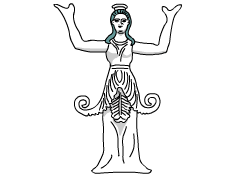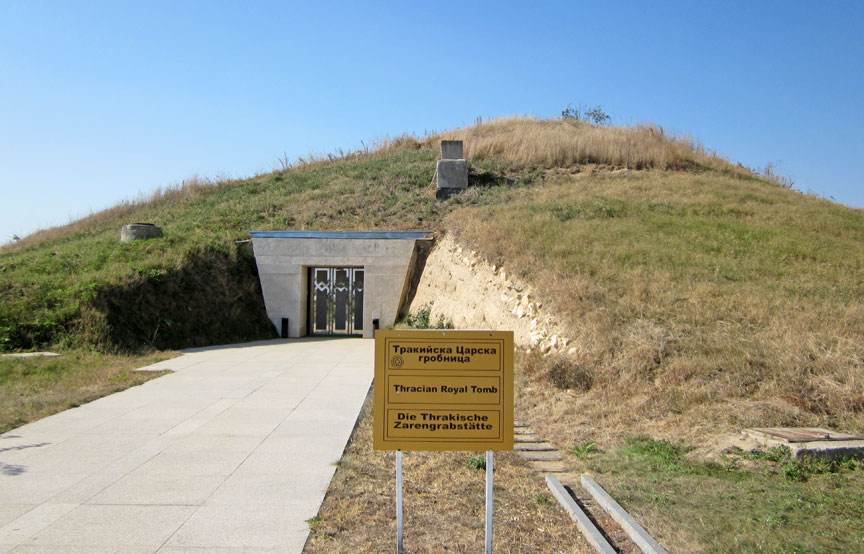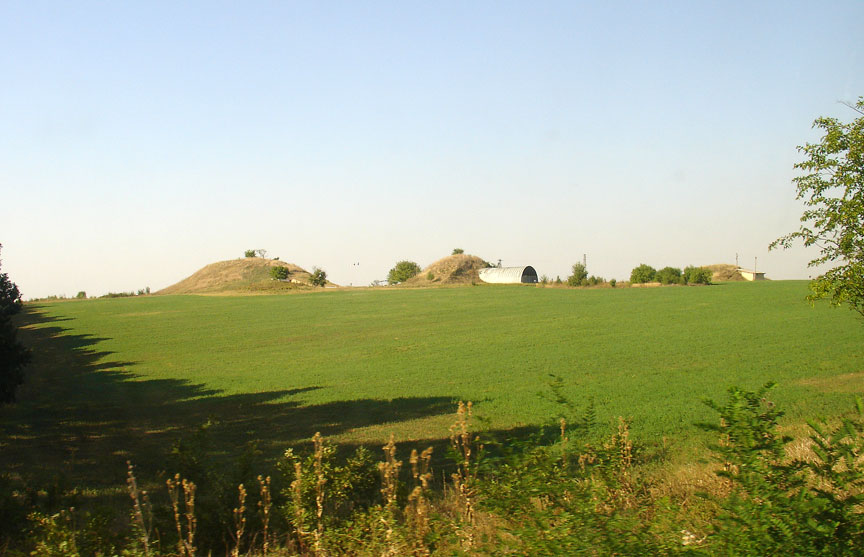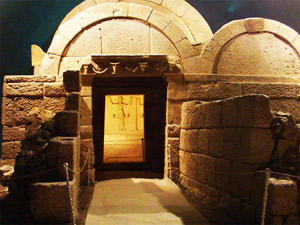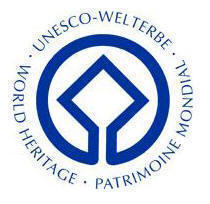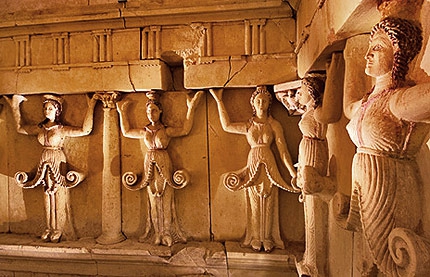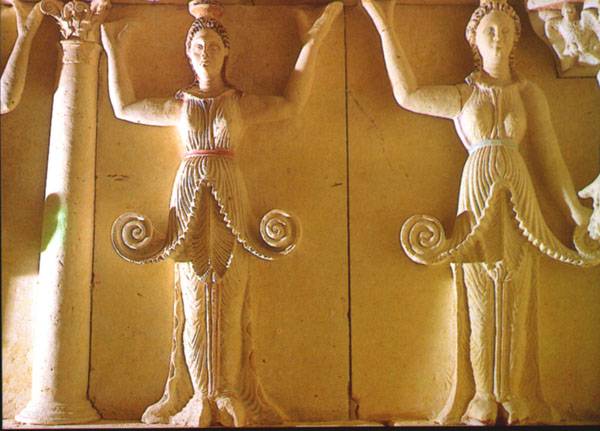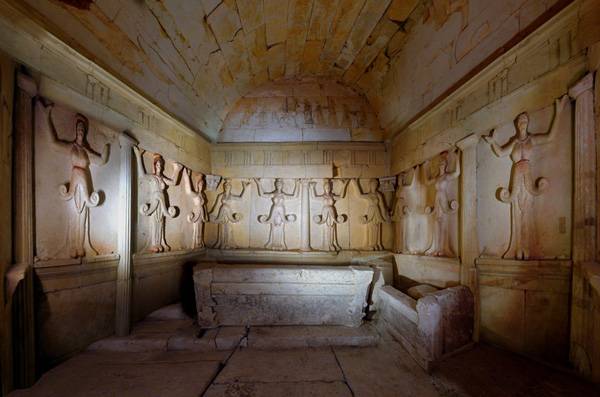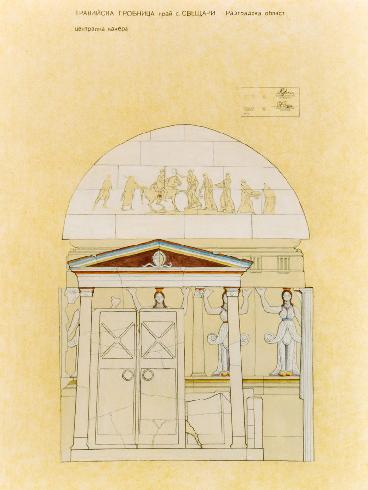The Thracian tomb of Sveshtari
(Bulgarian: Свещарска
гробница, Sveshtarska grobnitsa) is located
2.5 km outside the village Sveshtari in the
Razgrad Bulgarian Oblast. The tomb dates
from the
third century BC. It was discovered in 1982
and contains unique half-human, half-plant
caryatids. The tomb probably belongs to
Dromichaetes, king of the Getae, a Thracian
tribe. The tomb is a fine example of the
fundamental structural principles of
Thracian cult buildings. The 10 female
figures in the walls of the central chamber are the only examples of this type
found
so far in the Thracian country. It is a
remarkable reminder of the culture of the
Getes, a Thracian people who according to
ancient geographers was in contact with
Hellenistic and Hyperborean worlds. The
decoration of the burial chamber is
exceptionally interesting, a unique blend of
art and architecture. The actual tomb dome
is small, but the paintings are still very
intact and beautiful to see. These
paintings are made by the Thracians. The
Thracians founded from 6000 BC settlements
in Bulgaria. Around 2000 BC the Thracians
had built a high civilization: pottery,
metalwork and painting were on a high level.
They reached the height of their civilization in the 4 ° and 5 ° century BC,
dominating large parts of the Balkans.
The Thracians remained independent until
Philip II of Macedon, father of Alexander
the Great in 346 BC conquered their empire;
this domination did not last long. In the
Roman period it took the Romans nearly 100
years to finally defeat the Thracians: in 46
BC eventually came an end to the Thracian
kingdom as they were included in the Roman
Empire.
